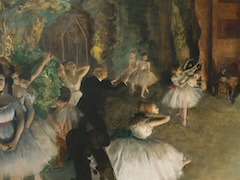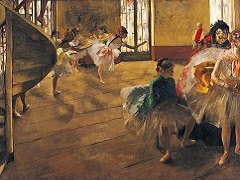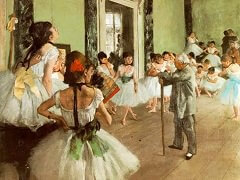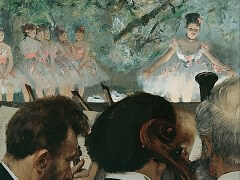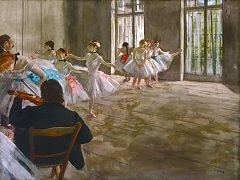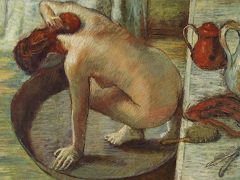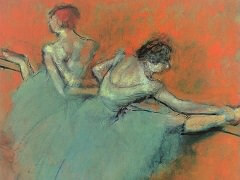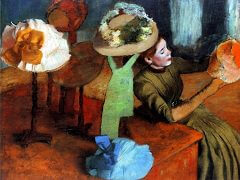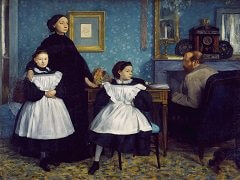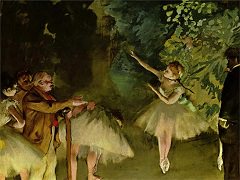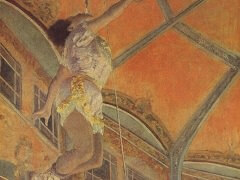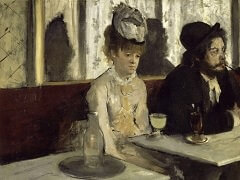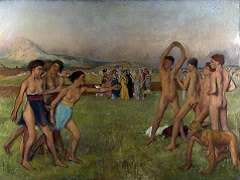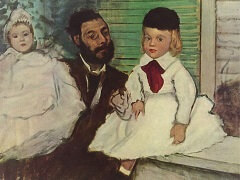Young Woman with Ibis, 1860 by Edgar Degas
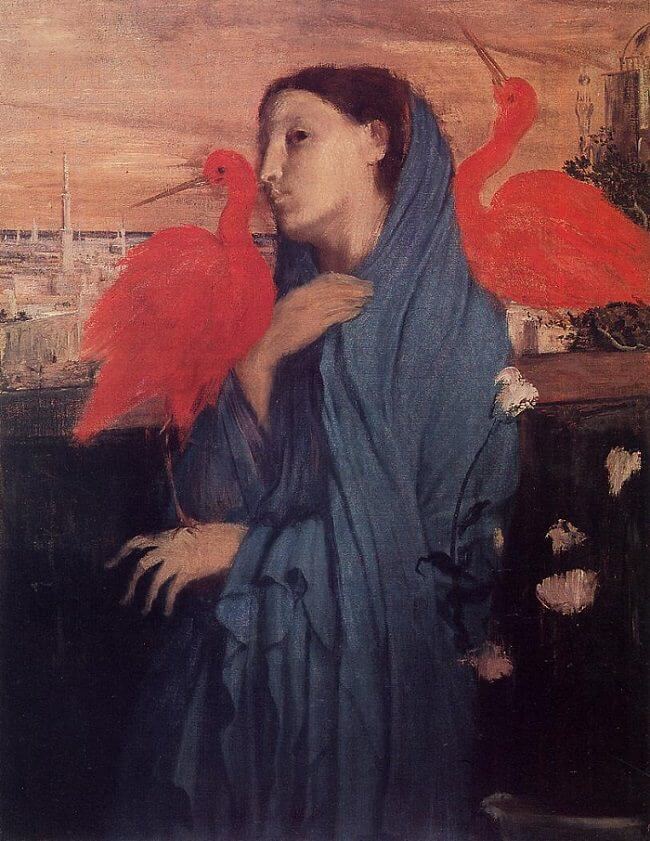
Young Woman with Ibis found fame at the Edgar Degas retrospective held in 1988-89 at the Museum, where visitors were surprised by its unfamiliarity. The fame of Degas's ballet, bather, and jockey scenes has eclipsed his early career, when he wanted nothing more than to be a history painter like his two gods, Ingres and Eugene Delacroix. Guided by the example of Pierre Puvis de Chavannes and his close friend Gustave Moreau, the young Degas sought to invent scenes that conveyed a sense of distant times and places.
Moreau may have suggested this subject to Degas; an early notebook bears the title "Young Egyptian Girl Feeding Ibises." Probably begun in Rome over the winter and spring of 1857-58, the canvas was brought back to Paris, where Degas is thought to have added the Oriental cityscape. He based the pose of the figure on Hippolyte Flandrin's painting Dreaming, which itself derived from the figure of Stratonice in Ingres' famous Antiochus and Stratonice (Musée Condé, Chantilly). In contrast to the meticulous finish of the figure, drapery, and cityscape, the flamboyant ibises are only sketched in. Degas failed to finish many of his early canvases, most of which, like this one, he kept until his death

